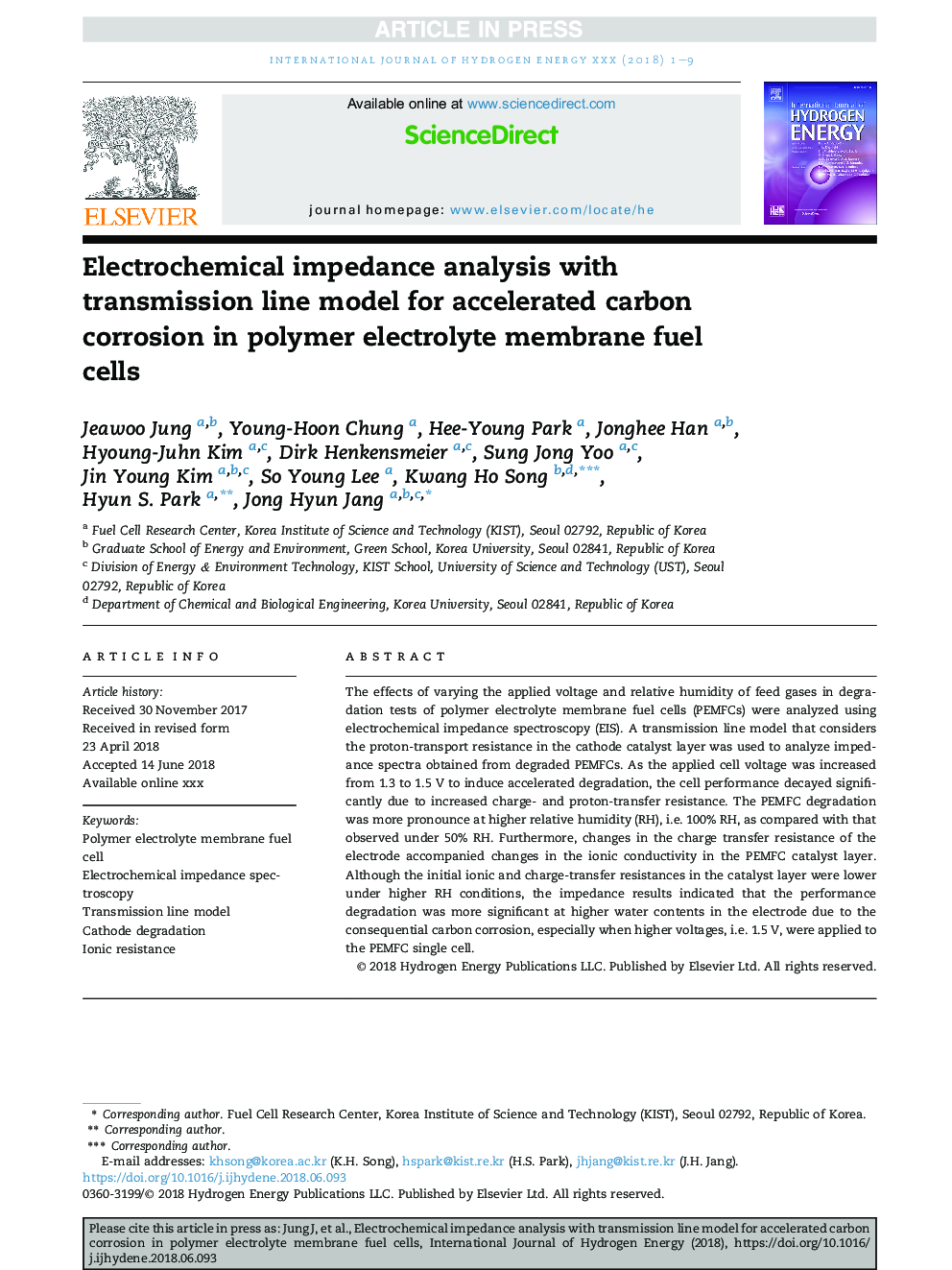| Article ID | Journal | Published Year | Pages | File Type |
|---|---|---|---|---|
| 7705355 | International Journal of Hydrogen Energy | 2018 | 9 Pages |
Abstract
The effects of varying the applied voltage and relative humidity of feed gases in degradation tests of polymer electrolyte membrane fuel cells (PEMFCs) were analyzed using electrochemical impedance spectroscopy (EIS). A transmission line model that considers the proton-transport resistance in the cathode catalyst layer was used to analyze impedance spectra obtained from degraded PEMFCs. As the applied cell voltage was increased from 1.3 to 1.5Â V to induce accelerated degradation, the cell performance decayed significantly due to increased charge- and proton-transfer resistance. The PEMFC degradation was more pronounce at higher relative humidity (RH), i.e. 100% RH, as compared with that observed under 50% RH. Furthermore, changes in the charge transfer resistance of the electrode accompanied changes in the ionic conductivity in the PEMFC catalyst layer. Although the initial ionic and charge-transfer resistances in the catalyst layer were lower under higher RH conditions, the impedance results indicated that the performance degradation was more significant at higher water contents in the electrode due to the consequential carbon corrosion, especially when higher voltages, i.e. 1.5Â V, were applied to the PEMFC single cell.
Keywords
Related Topics
Physical Sciences and Engineering
Chemistry
Electrochemistry
Authors
Jeawoo Jung, Young-Hoon Chung, Hee-Young Park, Jonghee Han, Hyoung-Juhn Kim, Dirk Henkensmeier, Sung Jong Yoo, Jin Young Kim, So Young Lee, Kwang Ho Song, Hyun S. Park, Jong Hyun Jang,
